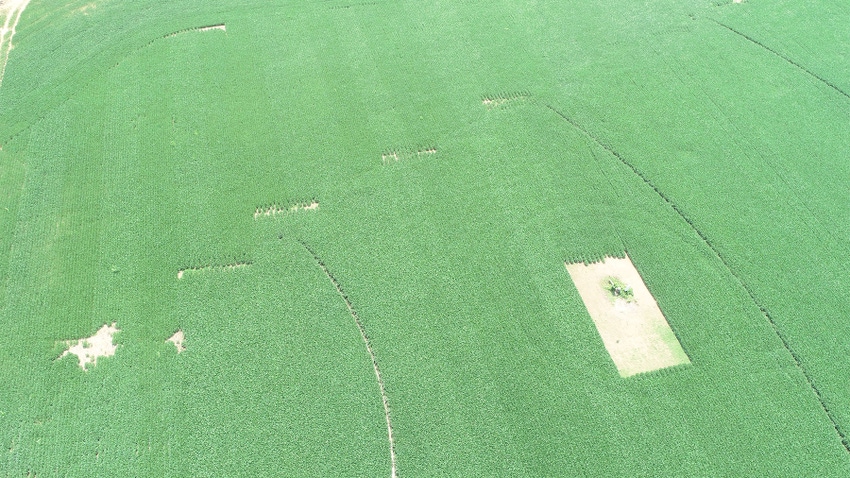
If you don’t scout fields with a drone, why not? Are you paying a crop consultant to fly your fields at key times instead? If not, why not?
Steve Gauck suggests asking yourself these questions. Drones today are relatively inexpensive and easy to use. Flying one yourself does require training and obtaining a license from the Federal Aviation Administration.
“We certainly see fields in a whole different light after we fly a drone and obtain images,” says Gauck, a regional agronomy manager for Beck’s, based near Greensburg, Ind. Beck’s sponsors Soybean Watch ’23.
“You need to ground-truth what you see in a drone image,” Gauck notes. “But drone images can guide you to where you should look more closely to confirm a suspicion or find an explanation. And drone images can alert you to patterns or blemishes you may not pick up easily through traditional scouting.”
Interpreting drone images
Here are observations Gauck made after flying a drone over the Soybean Watch ’23 field in late summer. Refer to the photo above.
Stand uniformity. Notice areas in the lower and upper left part of the image. Brown soil peeks through the green. “The stand isn’t as uniform there,” Gauck explains. “There was irrigation in the main part of the field, but even though the grower irrigated to help emergence, it was less effective there. That area is more rolling, and soils are lighter.”
Center pivot well location. The large rectangle with no plants is the well head. It provides a point of reference for the field.
Vole hole. The irregular-shaped bare spot in the lower left of the image is likely vole damage, Gauck says. “There were more vole holes farther east in the field, which don’t show in this shot. This was soybeans after soybeans. Normally, you see them more in beans no-tilled into corn.”
Gauck says if you were to combine vole feeding spots into one area, it wouldn’t be big. “But it looks ugly,” he adds.
Short planter skips. Notice the brief skips where apparently no seed dropped in the upper part of the image. These tend to line up with lines where the irrigation paths end. Due to field layout, the upper left corner in the image is not irrigated.
“We could not figure this out for the longest time,” Gauck says. “Finally, we recalled a conversation with the grower that the corners might have been planted separately. He confirmed that yes, they planted the main part of the field, then planted the corner in short rows to keep one variety under irrigation.
“Now the light bulb goes off and it makes sense! Super-brief skips are where the operator didn’t get the planter back down in time after turning or pulled it out too quickly.”
Light vs. dark pattern. There appear to be blocks of lighter vs. darker beans running across the field. “The obvious conclusion is that there were two varieties in the planter, one on one side and one on the other,” Gauck says. “But the grower says their records only show planting one variety in that part of the field, and the person planting that day only remembers using one variety.”
Stay tuned! “Sometimes you find things that are difficult to explain,” Gauck acknowledges. “This is one of those times. We’re still working on it.”
About the Author(s)
You May Also Like




